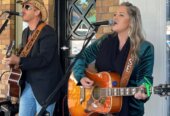Waikato Regional Councillors have backed a project to future-proof homes in the province via low interest loans. The proposal is part of the council’s draft long term plans. Roy Pilott looks at the proposal and what inspired it.

Home owners would have access to a suite of improvements beyond insulation, double glazing, heating and ventilation.
The regional council which inspired Waikato’s Regional Council to go into the sustainable housing market has loaned money to upgrade 16,500 homes.
The represents a quater of the occupied dwellings in the region.
Hawke’s Bay Regional Council (HBRC) launched a Heatsmart programme in 2009 and upgraded to a sustainable housing concept in 2018.
As part of its 2018–2028 Long Term Plan, HBRC agreed to borrow up to $13 million over 10 years, to provide financial assistance packages to initially allow 1,300 homes in Hawke’s Bay to become more sustainable, reduce energy consumption, and become more resilient in a civil emergency.
It estimates the social savings on every dollar loaned is $4 – and the project doesn’t cost ratepayers as it becomes a Voluntary Targeted Rate on the home.
HBRC borrows money from banks to on-lend to ratepayers and it takes advantage of its credit rating and financial standing to borrow at a low rate.
Its success has encouraged the Waikato Regional Council to attempt to mimic the project in the greater Waikato.
Under the scheme being put up for public consultation by the council it would cap the loan fund at $35 million and allow for about 920 new applications a year.
Home owners would have access to a suite of improvements beyond insulation, double glazing, heating and ventilation – it could extend to sustainable improvement options such as water tank installation, solar power and septic tank upgrades.
The council has existing funding schemes aimed at lower carbon housing and healthy homes. In established the On the House Programme in 2007, spurred by National Air Quality Standard changes.
Part of that project sought to clear the air in Tokoroa by replacing woodburners in homes.
Other councils to have programmes to make homes more energy efficient include Bay of Plenty Regional Council, Clutha District Council, Dunedin City Council, Environment Canterbury Regional Council, Greater Wellington Regional Council, Environment Southland, Marlborough District Council, New Plymouth District Council and South Taranaki District Council.
Waikato anticipdates about 340 applications for the scheme in the first year and an average lend of $5500. It is expected it would take about five years to reach a point where the scheme breaks even.
The paper for consideration on the project suggests the most robust and efficient model to meet WRC’s carbon neutral aim, as well as its climate and economic resilience objectives, would be a model that uses the On the House Programme as a base, and matures into a holistic Sustainable Homes programme.








